This week in conservation at Mut
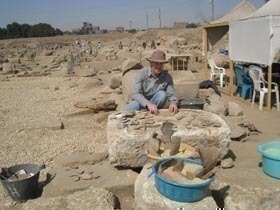
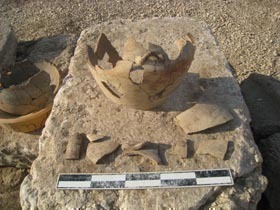
During this past week I continued to treat small finds excavated from the west side of the Taharqa gate, and to watch the progress of the stabilization and rebuilding of the south wing of the gate. In his last blog entry, Richard wrote about the processing of the hundreds of pottery sherds dug up over the course of the season. Occasionally there are enough sherds from a single vessel to reconstruct it, and for me there is a certain zen-like satisfaction in assembling these 3-D puzzles. In the picture on the left, I’m sorting through pieces looking for possible joins, and I’m using the sand-filled tubs to prop up the pieces that I’ve already glued together. The adhesive of choice in this case is the ever-useful Paraloid B-72 acrylic resin. Pictured on the right is part of a large, double-handled vessel with white slip decoration that I put together.
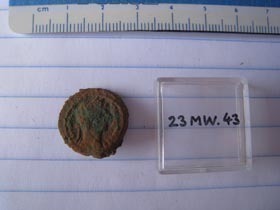
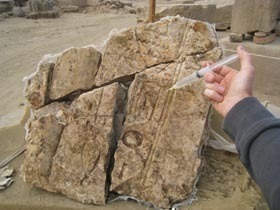
I also continued to clean coins using the mechanical and chemical methods described in my previous blog entry. One of the clearer images I found on the dozen or so coins I’ve cleaned so far is pictured on the left. It’s probably the profile of a Roman emperor wearing a laurel wreath, and hopefully there’s enough information visible for a specialist to identify and date the coin. Another of this week’s projects, a broken limestone fragment with part of an inscription carved on its face, is pictured on the right. The block was found reused in the north side of the Taharqa gate, and probably dates to the time of Ramses II according to Jaap van Dijk, our team’s hieroglyph specialist. The fragile face of the stone was consolidated with a 2% solution of B-72 resin in acetone and ethanol, applied with a syringe.
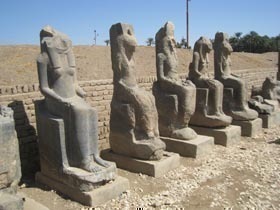
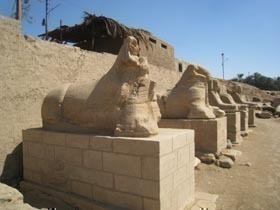
This season I’ve had the opportunity to check the condition of many of the repairs done on the large-scale sculptures in the precinct by the Brooklyn Expedition in past seasons. Stone, though a seemingly impervious material, is actually very susceptible to degradation caused by the moisture and soluble salts found in the ground here in Egypt. One of the most significant preservation initiatives in the precinct over the years has been to move many of the free-standing sculptures and architectural fragments onto raised brick and mortar platforms (mastabas) with moisture barrier material built into the mastaba bases that isolates the sculptures from water and salt in the soil.
With Bill Peck as my guide, we looked at many of the lion-headed Sakhmet sculptures in the second court of Mut Temple that were repaired and placed on mastabas such as those pictured above on the left. The badly eroded ram-headed sphinx pictured on the right was repaired and moved onto a new stone pedestal under the direction of Brooklyn Museum conservator Lisa Bruno and our Egyptian conservator Khaled Mohamed Wassel. I’m happy to report that the repairs are holding up well. Many of the sculptures in the precinct have suffered extensively from centuries of burial and vandalism but at least now the deterioration process has been slowed somewhat.

John is a conservator of sculpture and decorative arts at the Detroit Institute of Arts where his responsibilities include all aspects of the examination, preservation, and treatment of sculpture and decorative arts in the permanent collection, including Ancient, European, Asian, African, Oceanic, American, and Contemporary art. He received his M.A. in conservation from the State University College at Buffalo in 1990. His field experience has included the treatment of the limestone sculpture on the west front of Wells Cathedral in England, treatment of the sandstone frieze on Boston’s Trinity Church, and the restoration of ceramics excavated at the site of the former Chinese Imperial kilns in Jingdezhen, China.
